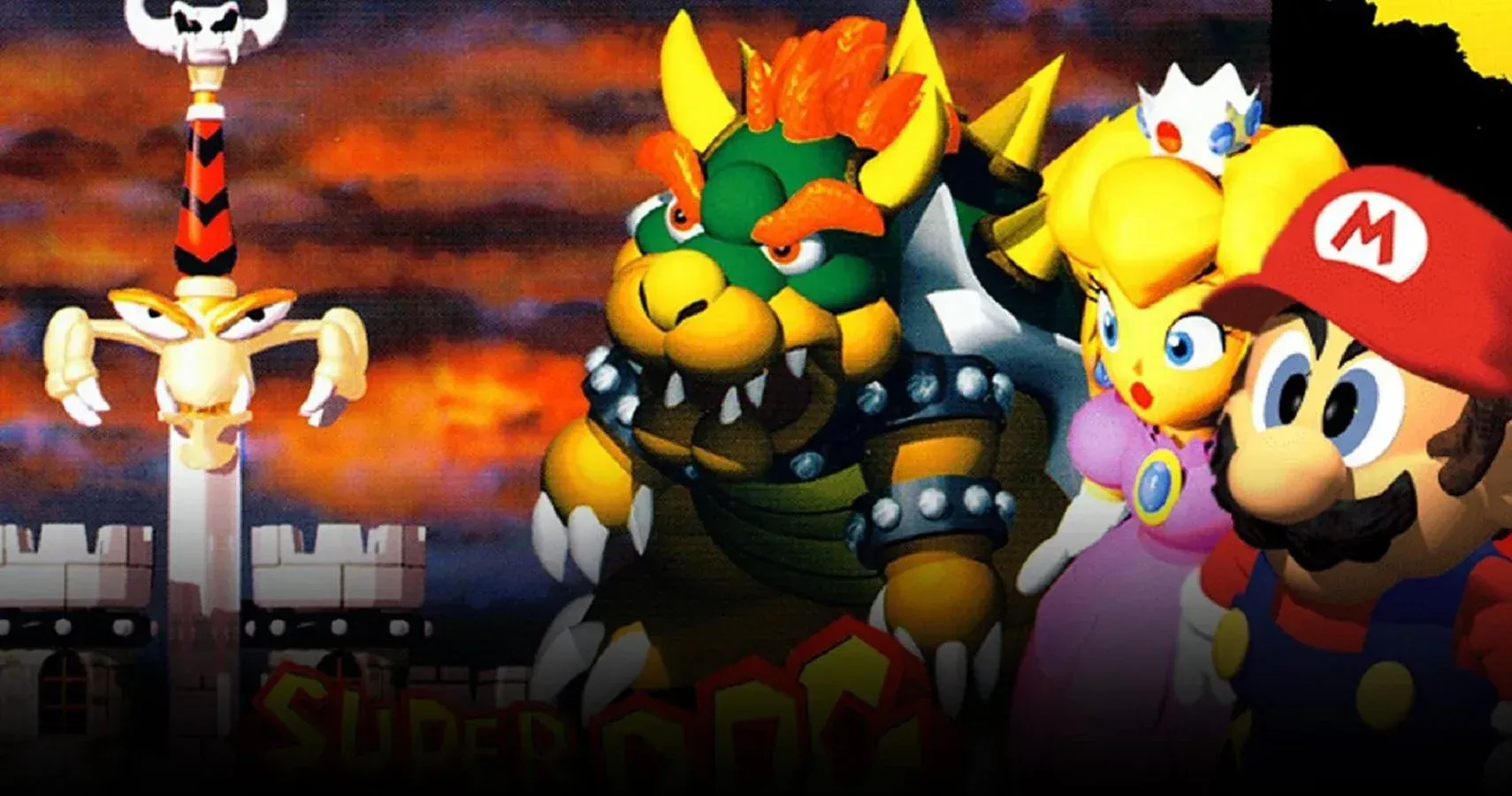A Look Back at Super Mario RPG
Relish the nostalgia with the games of the ‘90s

It is funny to look back over the years at the many games that have featured Mario and think about how Super Mario RPG: Legend of the Seven Stars was ever conceived. It would kick off a new genre for everyone’s favorite plumber, and in a way, was ahead of its time in terms of where RPGs and video games began to experiment.
The Accessible JRPG
According to interviews, Squaresoft was looking for a way to make a more accessible and marketable JRPG outside of Japan at the same time Shigeru Miyamoto was interested in making an RPG starring Mario. The two companies met in 1994 and development began.
The goal was to take the platformer and movement-focused design of Mario and meld that with a turn-based system and RPG progression that would be accessible for fans and non-fans of JRPG games. The game’s art was advanced for the time: making use of a 2.5 D style to give the appearance of 3D, and was one of the most striking games graphically for the SNES.
Movement and exploration were done in real-time, with players able to explore and jump around each map as Mario. Unlike other recognizable JRPGs, there were no random encounters in the game. Every enemy existed on the main map and would chase after Mario; with combat initiating if the two met.
While combat was turn-based, as with every JRPG at the time, a simple change would become the foundation for future Mario RPGs.

Action Command Combat
Turn-based gameplay has always done what it can to take action out of the equation and focus on stats. From my experience, Legend of the Seven Stars was the first RPG to feature what has been defined as “action commands.” Every action that the player can take during combat has a corresponding button that can enhance said action. Even using items can be rewarded with a freebie with a correctly timed press.
Instead of just having the same generic command for everyone, each party member would have different action commands based on their abilities, along with their own timing. Speedrunners have gotten well acquainted with Mario’s jump as there is an infinite jump move that requires precise timing.
Besides combat, there were many areas where platformer and action fans would feel right at home. Minigames like a rhythm-focused Yoshi race, a Mode 7 minecart section, and more, helped to keep the player guessing about what was to come. And while many people checked the game out solely for Mario and Co., it was the additions by Squaresoft that truly made it stand out.

Squaresoft Mario Brothers
Having Shigeru Miyamoto on as producer certainly brought Nintendo’s charm and design to Squaresoft, but one of the most memorable aspects of Legend of the Seven Stars was the elements unique to Squaresoft. Anyone who plays Mario games knows that story and characterization aren’t often the strong points, which also makes it hard to create an RPG world on par with the likes of Final Fantasy.
And yet Squaresoft managed to create its own version of the Mushroom Kingdom and filled it with one of the most diverse groups of characters ever seen in a Mario game. While the usual suspects of the plumber’s games were here, except for Luigi who was at home sleeping the entire time, the majority of the story focused on original characters. Despite becoming a running theme in later Mario RPGs, Bowser was not the main villain of the game, and was quickly pushed aside by the game’s true bad guy: Smithy.
Mario’s mission became exploring the kingdom to collect the titular seven stars in order to grow strong enough to beat Smithy and save the world. Most of the memorable scenes in the game revolved around original characters like Mallow, fighting a multi-part wedding cake that was also a terrifying spellcaster, and more.
Of course, I have to mention everyone’s favorite character Geno, an alien visitor who takes the form of a child’s doll to help Mario and Co. The music, composed by Yoko Shimomura featured arrangements from Final Fantasy 4 and Super Mario Brothers along with original music. Geno’s theme and the miniboss theme have been living rent-free in my head since 1996
What makes Legend of the Seven Stars so special is that it was one of the earliest examples of combining genres and gameplay systems with RPG design.

The Legacy of the Seven Stars
Super Mario RPG Legend of the Seven Stars is first, last, and middle, an RPG experience. But Squaresoft’s attempt at making a more accessible RPG for non-fans could be seen as the start of a trend that would become more prevalent in the game industry beyond just another flagship spinoff for Mario.
The game played nothing like the JRPGS or CRPGS of the time: you controlled Mario in a 2.5 D style as a platformer. Interestingly, these RPGs would be the only Mario games that worked in this format. While Squaresoft only did the first game, this would give Nintendo the motivation to launch the Paper Mario franchise helmed by Intelligent Systems. While arguably the quality may have waxed and waned over the years, it did give us Paper Mario and the Thousand-Year Door, which was one of the best GameCube games. Alpha Dream would create the Mario and Luigi series on handheld, with both series focusing on different game systems and designs. While the story and world of Mario’s platforming games never feel fleshed out, the RPGs are given a chance to create some meme-worthy dialogue and situations.
Over the last decade, we have seen more developers embrace the RPG side of design while applying it to other genres. Whether this is the progression system of Call of Duty, the action-heavy RPG builds of the Dark Souls series, or the biggest example: role-playing shooting with Borderlands. Nintendo even experimented with Super Paper Mario as a Mario platformer with RPG leveling.
This kind of experimentation with genres has certainly not gone unnoticed by indie developers, and the combination of RPG systems into other genres has become yet another viable option for indies to leave their own mark: case in point — RPG and shmup dodging with Undertale.

1UP to RPGs
Part of my original falling out with the RPG genre was just playing the same thing repeatedly, and the burnout that ensued with another 80+ hour RPG on my plate.
It wasn’t until seeing developers experiment with different takes, and genre combinations, that I began to try other RPG combinations like the Yakuza series. Super Mario RPG: Legend of the Seven Stars is one of those combinations that should not have worked, and yet it delivered on a new kind of RPG before people even could consider having such a split.
In today’s market, it is becoming rare to see “traditional JRPG” styled games. Even the banner franchise, Final Fantasy has been moving away from that with both Final Fantasy 15 and Final Fantasy 7 Remake, for better or worse.
The line between what is and what isn’t an RPG has become blurred over the years, and it's easy to trace the start to the success of Super Mario RPG.
If you enjoyed my post, consider joining the Game-Wisdom Discord channel. It’s open to everyone.
